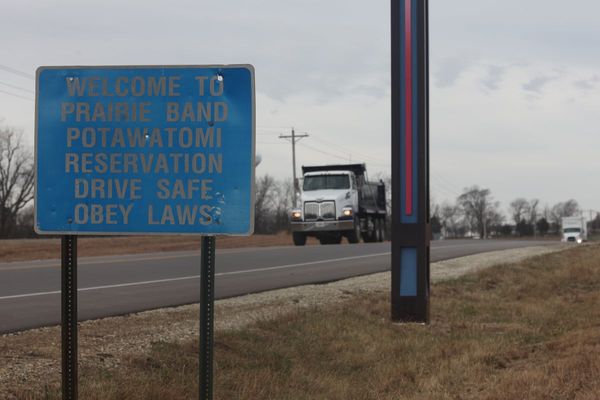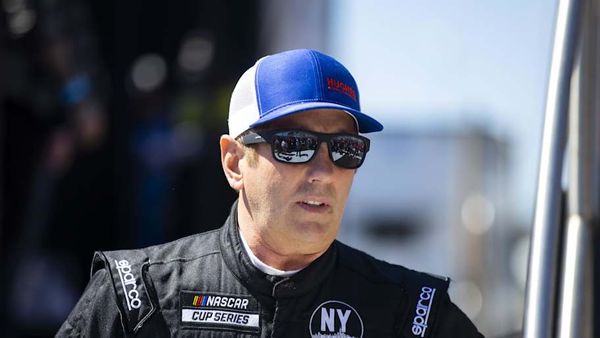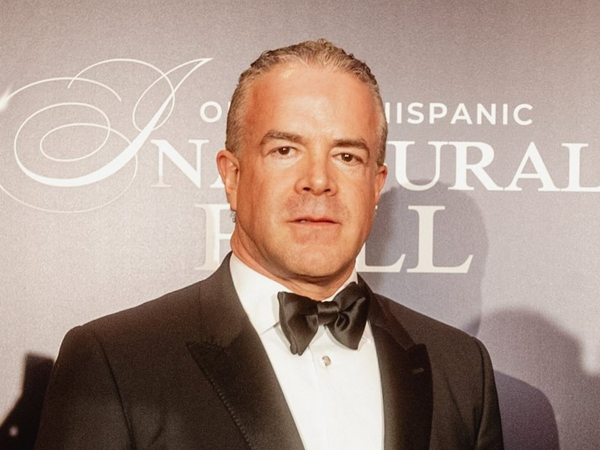
On the edge of the Seto Sea, in the Japanese city of Kure, not far from Hiroshima, there is a park bench facing towards Australia.
Set there by locals, the Koi-Niji – or “Rainbow Love” – bench commemorates an unlikely romance: between a Japanese girl who survived the first atomic bomb and an Australian man whose love for her helped change the course of his country’s history.
Sixteen-year-old Nobuko Sakuramoto was in her school uniform, eating breakfast in the kitchen with her family, when air raid sirens went off on 6 August 1945. She didn’t think much of it because she couldn’t hear any planes. Then there was a bright white light and an explosion, and the building collapsed on top of her.
Cherry, as Nobuko is known to her Australian family, never spoke much about her experience of the bombing and its immediate aftermath. The fragments her children have pieced together over the years are the stuff of nightmares – a city transformed into flaming rubble, the stench of burning flesh, the screams of the wounded and bereaved. By all accounts, it was a miracle she survived: her home was right near the centre of the blast that killed an estimated 140,000 people, and thousands more suffered in the following years from the effects of radiation.
But Cherry’s survival at Hiroshima would not be the only remarkable experience of her life. Hers is a story that, ahead of the 80th anniversary of the bombing, her family believes is all the more important to tell.
After Japan surrendered to the Allies, Cherry made her way to Kure, where she got a job as a housemaid at the British Commonwealth Occupation Forces base. She was cleaning a bedroom when an Australian soldier walked in.
“She’d been told by the Americans, ‘Watch the Australians, because they’ll try to eat you’,” her daughter Jenny Hall says. “So Mum was absolutely terrified when this big white man came in. But somehow, in time … love blossomed.”
Gordon Parker had been too young to enlist in the army during the war, so he had gone to Japan with the occupation forces. “He was all gung ho. He was ready to go fight these Japanese,” Jenny says. “And then when he landed in Kure, all he saw was kids with no arms or whatever else, injured, and he just said, ‘Kids had nothing to do with this war.’ It changed Dad’s whole outlook.”
Gordon and Cherry’s romance bloomed in secret, in defiance of anti-fraternisation laws that prohibited it. The couple would rendezvous outside the base, and Cherry would walk behind Gordon instead of beside him in public. Still, other Japanese people called Cherry a traitor, spat at her and threw rocks at her house, and once she was arrested by American forces on suspicion of prostitution.
So they got married, and Gordon tried to bring Cherry to Australia – only to become embroiled in a different kind of fight.
The Australian government had embarked on a postwar “populate or perish” immigration program, continuing the racist principles of the white Australia policy, which prioritised British migration and sought to exclude migrants who weren’t white Europeans. They had a particularly sour view of Japanese people. During the war, thousands of people with Japanese ancestry in Australia were designated as “enemy aliens”, rounded up and imprisoned in camps. At the end of the war, they were “repatriated” to Japan, despite many of them having been born in Australia or lived in the country for decades.
It was against this history that Gordon, and other Australian servicemen who had fallen in love in Japan, fought to bring their loved ones to Australia. They wrote letters to newspapers and lobbied politicians and power brokers. But it wasn’t until 1952 that then immigration minister Harold Holt finally decided to approve Gordon and Cherry’s request. By this time the couple had two children and a third on the way.
Cherry was the first of more than 650 Japanese women, or “war brides”, to make the journey to Australia over the following decade. Her arrival would mark the first steps towards the dismantling of the white Australia policy. But it was a hard road.
“Even growing up in Melbourne in the 60s, myself and all my brothers – we got the racism, we got the slurs,” says their son Ian Wade-Parker. “Mum, however – I’ll give it to her – just took it all in her stride.”
The couple didn’t teach their eight children to speak Japanese, hoping ignorance would shield them from some of the racism.
“Dad would have to check the mail, because there’d be so much hate mail, and the same with phone calls,” Jenny remembers. “It wasn’t until later that I realised I should be proud of my heritage. I should be proud of what Mum and Dad did.”
For Ian, it wasn’t until his screenwriter niece, Alli Parker, fictionalised his parents’ story for her debut 2023 novel, At the Foot of the Cherry Tree, that he came to embrace his Japanese heritage.
“I was ashamed, and I just pushed it to the side and tried to make out that I wasn’t Japanese at all. Which, thinking back on it, was a bit of a survival mechanism, but at the same time, a shame, because I wished that I embraced it earlier,” he says.
The 80th anniversary of the bombing of Hiroshima is an opportunity for the family to reconnect with their heritage on behalf of their parents – and to continue to share a love story that triumphed over the hatred engendered by war.
Gordon died 15 years ago. Cherry, who is now 96 and lives with dementia, is too frail to travel. Instead, three of their eight children and one of their grandchildren will make the journey to Japan for the anniversary proceedings in her stead.
“I’d like to be there to represent her, because I think there’s lots of memories, and lots of nightmares, that are held there,” Jenny says.
The Parkers intend to visit Kure, too, and the bench seat that commemorates their parents’ romance. They hope to one day find a place in Melbourne, near where they grew up, to establish a companion for it, facing towards Japan.







